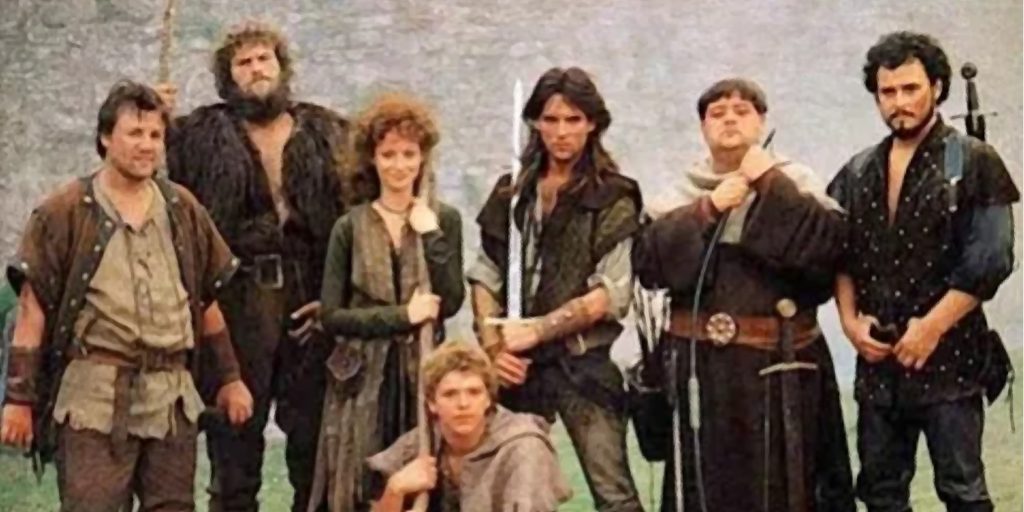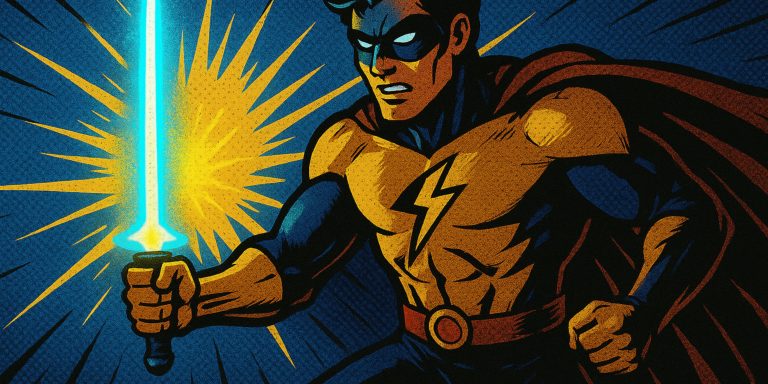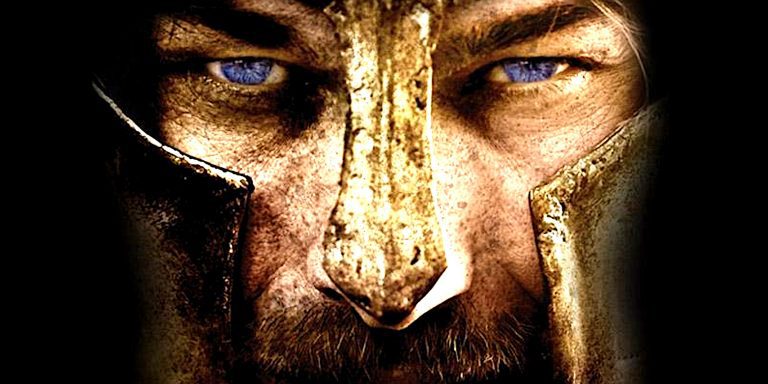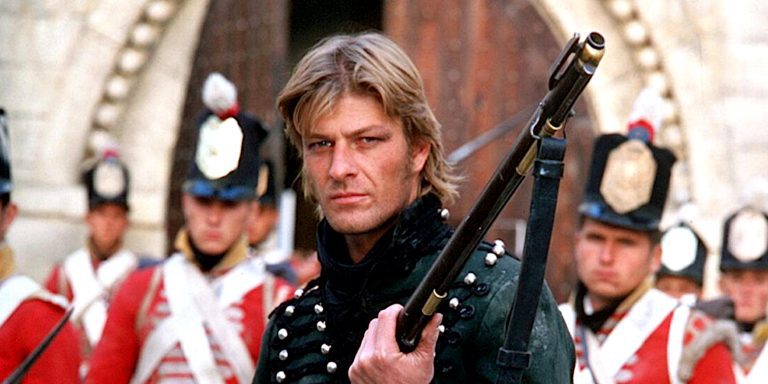
Robin of Sherwood ran from 1984 to 1986 and quickly earned a reputation as one of the most atmospheric and influential takes on the Robin Hood legend. Created by Richard Carpenter, the series blended gritty medieval realism with pagan mysticism, creating a version of Sherwood Forest that felt ancient, dangerous, and alive.
Plot Summary
The story begins with Robin of Loxley, a Saxon peasant chosen by Herne the Hunter to defend the common people against Norman oppression. Guided by Herne’s voice in the forest, Robin forms his band of outlaws: Little John, Will Scarlet, Much, Friar Tuck, and Lady Marion. Together they outwit the ruthless Sheriff of Nottingham and his ambitious knight, Sir Guy of Gisburne.
The first two seasons followed Michael Praed’s Robin of Loxley. His death at the climax of Season 2 shocked audiences and broke television convention. In Season 3, the mantle passed to Robert of Huntingdon, a reluctant nobleman played by Jason Connery. This bold move cemented the idea that Robin Hood is less a man than a legend that can be carried forward.
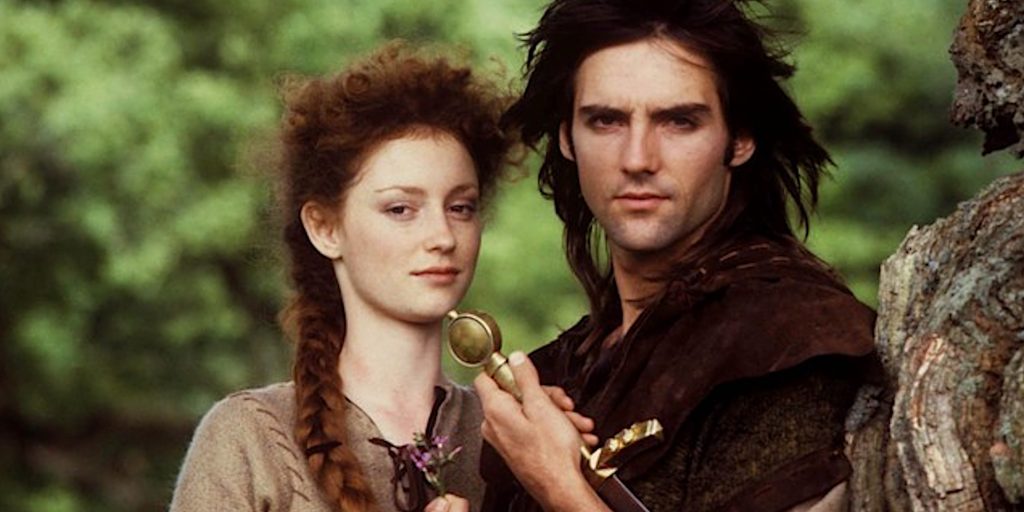
Main Cast
Robin of Loxley Arc (Seasons 1–2)
- Michael Praed – Robin of Loxley
- Judi Trott – Lady Marion
- Nickolas Grace – Sheriff of Nottingham
- Robert Addie – Sir Guy of Gisburne
- Clive Mantle – Little John
- Ray Winstone – Will Scarlet
- Peter Llewellyn Williams – Much
- Phil Rose – Friar Tuck
- John Abineri – Herne the Hunter
Robert of Huntingdon Arc (Season 3)
- Jason Connery – Robert of Huntingdon
- Returning cast included Judi Trott, Nickolas Grace, Clive Mantle, and Ray Winstone
Episode Guide
Season 1 (1984)
- Robin Hood and the Sorcerer – The birth of the Hooded Man
- The Witch of Elsdon – The outlaws defend a woman accused of witchcraft
- Seven Poor Knights from Acre – Crusaders seek vengeance in Sherwood
- Alan a Dale – Robin rescues a minstrel from a forced marriage
- The King’s Fool – King Richard tests Robin’s loyalty
Season 2 (1985)
- The Prophecy – The sorcerer Gulnar emerges as a new threat
- The Children of Israel – The Sheriff targets Jewish moneylenders
- Lord of the Trees – A rival band challenges Robin’s leadership
- The Enchantment – Marion falls under a sorcerer’s spell
- The Swords of Wayland (two parts) – Dark Knights Templar threaten the outlaws
- The Greatest Enemy – Robin of Loxley dies, defying the Sheriff
Season 3 (1986)
- Herne’s Son (two parts) – Robert of Huntingdon becomes the new Robin Hood
- The Power of Albion – Robert proves himself worthy of Robin’s sword
- The Inheritance – Marion is kidnapped
- The Sheriff of Nottingham – Political scheming replaces the Sheriff temporarily
- The Cross of St. Ciricus – A fanatical monk brings chaos
- Rutterkin – A pagan healer is accused of sorcery
- The Time of the Wolf (two parts) – Gulnar’s magic threatens all England
Themes
- Mysticism and Paganism – Herne the Hunter brought spiritual weight and folklore into the legend.
- Class Struggle – Saxons against Normans reflected timeless tensions of power and injustice.
- Heroism and Sacrifice – Robin of Loxley’s death was a television milestone, showing that legends outlive men.
- Brotherhood and Loyalty – The outlaws’ bond was the series’ emotional spine.
- Love and Loss – Robin and Marion’s story gave the show its most human core.
Memorable Quotes
- Robin of Loxley: “Nothing’s forgotten. Nothing is ever forgotten.”
- Robert of Huntingdon: “You can’t kill a legend, my lord.”
- Herne the Hunter: “The Hooded Man shall return.”
- The Sheriff: “I want him alive! No, dead! No, alive!”
These lines captured the tone of the series: fatalistic, fierce, and laced with dark humour.
Weapons and Combat

The series stood out for its attention to weaponry and fight choreography.
- Robin’s Sword: A plain cruciform arming sword, emphasising his role as a man of the people.
- The Swords of Wayland: Legendary Saxon-forged blades central to one of the most memorable episodes.
- Norman Blades: Broadswords and falchions gave the Sheriff’s men a heavier, militaristic edge.
- Merry Men’s Arsenal: Little John’s quarterstaff, Will Scarlet’s dagger, and Much’s sling highlighted guerrilla tactics.
Choreographer Anthony De Longis ensured fights had weight and personality. Robin of Loxley moved with forest-born agility, while Robert of Huntingdon fought with a nobleman’s precision. Group skirmishes were chaotic and desperate, while duels carried symbolic heft, often pitting ideology against tyranny.
The Seven Swords Takeaway
Robin of Sherwood left behind a deep cultural footprint:
- Influence: Later Robin Hood series borrowed its mix of history and fantasy.
- Soundtrack: Clannad’s haunting music gave the show its soul.
- Cult Status: Despite ending abruptly after three seasons, it remains one of the most beloved versions of the outlaw’s tale.
- Authenticity: Costumes, settings, and props were grounded in medieval realism, enhancing the sense of place.
Robin of Sherwood showed that the legend of Robin Hood could be more than swashbuckling adventure. It made the myth feel ancient, mystical, and eternal.
“Nothing’s forgotten. Nothing is ever forgotten.”
